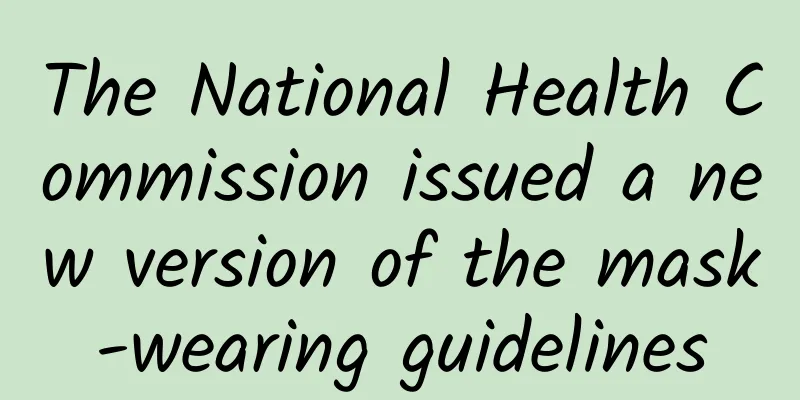The National Health Commission issued a new version of the mask-wearing guidelines

|
In view of the characteristics of the current variants of the new coronavirus and the epidemic characteristics of the population, and to further guide the public and key occupational groups to wear masks scientifically and in a standardized manner to protect themselves and others, on August 9, the National Health Commission updated the "Guidelines for Scientific Mask Wearing for the Public (Revised Version)" and formed the "Guidelines for Mask Wearing for the Public and Key Occupational Groups (August 2021 Edition)" (hereinafter referred to as the "Mask Wearing Guidelines"). The new version of the "Guidelines on Wearing Masks" sets new regulations on the scenarios and situations in which masks are required for the general public and key occupational groups, as well as mask selection and precautions. 1. Guidelines for the general public to wear masks The public is advised to use disposable medical masks, medical surgical masks or masks with higher protection levels. In addition to wearing masks in crowded indoor places, on public transportation, visiting hospitals, when experiencing symptoms such as nasopharyngeal discomfort, coughing, sneezing, and fever, and when not eating in restaurants and canteens, masks are also required when in crowded outdoor places such as open-air squares, theaters, and parks. It is recommended that when family members have symptoms such as nasopharyngeal discomfort, cough, sneezing and fever, they need to wear higher-level masks when going to the hospital for treatment to protect themselves and others and comprehensively prevent the risk of transmission. II. Guidelines for wearing masks for key occupational groups 1. Personnel from overseas and those in high-risk positions for contamination transmission Special emphasis is placed on strengthening protection for customs personnel, cleaners, porters, drivers and other positions related to overseas cold chain food and transportation. They are required to wear particulate protection masks throughout their work to prevent the risk of transmission through objects, the environment and people. 2. Medical staff General contact personnel: including outpatient and general ward medical staff, security, registration, guide, billing, pharmacy and other personnel must wear medical surgical masks or higher protection level masks throughout the process. People who come into contact with potential contaminants: cleaning staff, caregivers, plumbers, laboratory staff, etc., must wear particulate protection masks at all times*. Staff who come into contact with patients or infected persons: medical staff in fever clinics and isolation wards, nasopharyngeal swab samplers, etc., must wear medical protective masks at all times. 3. Service personnel in public places For example, flight attendants, police, couriers, etc. were previously required to wear disposable medical masks. This revision has been upgraded and strengthened to require them to wear medical surgical masks or masks with higher protection levels while at work. Note: *Particulate protection masks refer to products that meet the requirements of "disposable masks" in the "Respiratory Protection Self-priming Filter-type Particulate Respirator" (GB2626-2019) standard and do not have an exhalation valve. Health starts with everyone. Wear a mask, wash your hands frequently, gather less, pay attention to your own health, and protect yourself, which is to protect others! |
<<: Why is wax apple so expensive? Introduction to the value of wax apple
>>: Where did Delta come from? Is my protection still effective?
Recommend
What is the situation when the car makes noise under the car when idling? Why does the car make noise under the car when the air conditioner is turned on?
Many car owners will encounter this situation whe...
What does protein powder taste like? What is protein powder made of?
Protein powder is a combination of purified methi...
Can abortion and IUD be done together?
Can abortion and IUD be done at the same time? Un...
Treatment of long-term bloody stools in women with hemorrhoids
Hemorrhoids are no stranger to men and women in t...
What are the benefits of drinking black sesame paste for girls?
When we go shopping in the supermarket, black ses...
The consequences of having sex 50 days after a caesarean section
Although the pain of childbirth can be effectivel...
Can I eat broad beans when I am pregnant?
After pregnancy, women will experience various tr...
There is labor pain but no bleeding or water breaking.
Women should pay attention to regular prenatal ch...
What to eat for amenorrhea
Everyone knows about menstruation, but what is am...
FAQs on COVID-19 and urogenital diseases
This is the 3079th article of Da Yi Xiao Hu If yo...
How harmful are uterine fibroids?
People nowadays are very healthy, and everyone pa...
What should women eat if they have insufficient qi and blood?
Women have a few days of discomfort every month. ...
Women's bad breath is more embarrassing, four kinds of food are super effective in removing bad breath
Bad breath causes us a lot of embarrassment. Whet...
Can I have sex during confinement?
Chinese women have the habit of confinement after...
Can breast enlargement be achieved during menstruation?
There are really many ways to enlarge breasts. Th...









